Having a perspective is excellent, which is kind of like a bias. It is good because it makes you more effective and you can put your energy in those directions, right? But then sometimes, it's not right. In some situations, or some points of view, there's a different way to look at it. And this may help you make progress in a direction that was blocked with previous perspective. If you want to know what's true, then analytics is a pretty good place to start. Today we are standing at an inflection point in healthcare analytics.
Pandemic is still not ended but we are amidst rising geopolitical tensions, governments everywhere are switching from the pursuit of efficiency to a new mantra of resilience and self-reliance. However, even with all the adversities slowly but steadily we are heading towards the human-first-technology world. In this context healthcare management and analytics (HMA) and its components such as augmented human intelligence, statistical learning, machine learning and deep learning are becoming important and essential skills across healthcare industries and are expected to drive socio-economic development in the 21st century. No one is safe till everyone is safe. Our future is intertwined.
Scientists or businesses are using or leveraging the power of data from time immemorial. But usage of data was never so ubiquitous in our life ever in history as it is now. However, there are challenges. Sweet water shortages to lack of sanitation facilities to inadequate research funding to lack of education spending all will contribute to our woes. As we become more interdependent, we are even more subject to the fragilities that arise, and they are always unpredictable. No one could predict a ship going aground in the middle of the canal, just like no one predicted where the pandemic would come from. Just like we can’t predict the next cyberattack, or the next earthquake or Tsunami, but we know these are going to happen sooner or later.
Only a tiny fraction of global humanitarian assistance today is given directly to local and national organizations, and to organizations focused on the disproportionate challenges experienced by women and girls. The universal tendency to shout is an ironic reminder of how much we all have in common, as well as encouraging evidence that we have what we need to solve our shared problems. It’s as if the antidote is right there waiting in all that venom. We are all human. And we all have enormous energy to devote to helping and protecting those we love. We need to diversify our thinking if we want an inclusive and fair system.
The way healthcare services get delivered will see a drastic change. Climate change will continue to wreak havoc. Volatility, uncertainty, complexity and ambiguity (VUCA) will increase by the day. For hospitals or pharma companies or public health officials’ data alone will not be sufficient. They need to derive actionable insights from the data. Next step will be to deduct tangible research intelligence which can be monetized or can be used to improve life expectancy if implemented within time limits.
How to get started?
To uncover new business opportunities in the healthcare sector or to find new research areas, I begin by describing the seven patterns, and then move right to questions designed to ease our experiences. The questions seem simple, but answering them requires considerable thought in most cases.
- What data do we have as of today for diseases like diabetes or schizophrenia?
- What new data can we access for drug -research or for disease containment that we are not capturing till now?
- What data could we create from our products or services or operations?
- What helpful data could we get from others (patients/research work)?
- What data do others have that we could use in a joint initiative?
- How to segregate scientific data from the noise in public healthcare?
- How to reduce the time gap between a successful scientific development in vaccine or medicine to their availability in the marketplace?
Armed with the answers, pharma companies, hospitals, government agencies can cycle back through each pattern to explore whether it, or perhaps a modification or combination of patterns, could be applicable in their business context. The questions include:
1. Augmenting Products(medicines) or Healthcare Services
- Which of the data relates to our products or services and their(patients) use?
- Which data is valuable and which data we can discard?
- What insights could be developed from the data?
- How could those insights provide new value to us, our customers, our patients?
2. Digitizing Existing Assets
- Which of our assets are either wholly or essentially digital as of today?
- How can we use patients' data without compromising privacy to serve them better?
- Do we have physical assets that could be turned into digital assets and how? For example: we still do not have any platform or app which can reliably say how many hospital beds are available for the patients.
3. Combining data
- How might our(hospitals) data be combined with data held by others (doctors/nurses/hospitals/pharma companies) to create new value?
- Could we act as the catalyst for value creation by integrating data held by other players? (Say health insurance companies)
- Who would benefit from this integration and what business model would make it attractive to us and our collaborators?
4. Trading Data
- How could our data be structured and analyzed to yield higher-value information?
- Is there value in this data to us internally, to our employees(doctors/nurses/researchers), to our current customers, to potential new customers, or to another industry?
5. Codifying a Capability
- Do we possess any distinctive capability (genomics or CRISPR therapeutics) that others would value?
- Is there a way to standardize this capability so that it could be broadly useful across different business verticals (insurance industry)?
- Can we deliver this capability as a digital service? (For example: training and development or online counseling)
- Who in our industry or other industries would find this attractive?
- How could the gathering, management, and analysis of our data help us develop a capability that we could codify patients' progress?
Once pharma companies and hospitals worked their way through the set of questions, the process looks pretty much as they would expect it to: The various ideas are collated and prioritized; generally, one or two are tapped for further investigation; subgroups are charged with fleshing out the ideas in more detail.
Historically, research or innovation has been the main vehicle for overcoming the natural constraints on human agency – the physical and mental limits to what we can do. But humans also face social and cultural constraints. Most human relations exist within a principal-agent framework, and it is here that specific statistical applications can be contested.
To get into a data driven world we need a conducive environment and for that we need good policies and their implementation. There are serious challenges such as
- How to ensure data privacy without compromising data security?
- How to store healthcare data?
- How to protect or secure data?
- How will doctors cooperate with each other to leverage the benefit from data?
- How existing laws need to be changed (for example in case of mental health care) and how law enforcement agencies will be trained?
- Who will be the owner of patients' data?
Inequalities in access to reliable healthcare facilities costs us huge. We need to grapple with these questions (mentioned above) sooner than later if we are to have any chance of shaping the outcome in the interest of the many rather than the few. Government will need to develop a better understanding of the modern economy’s evolving value chains and the transactions that define it. In an efficient and equitable economy, analytics would be used to eliminate rent-seeking, monopoly, and oligarchy, while enhancing human agency and enabling the pursuit of economic and non-economic goals. Recognizing the centrality of these dynamics would represent a crucial step toward understanding where, how, and when analytics will eliminate, transform, and create better outcomes for all in the 21st century.
Author




